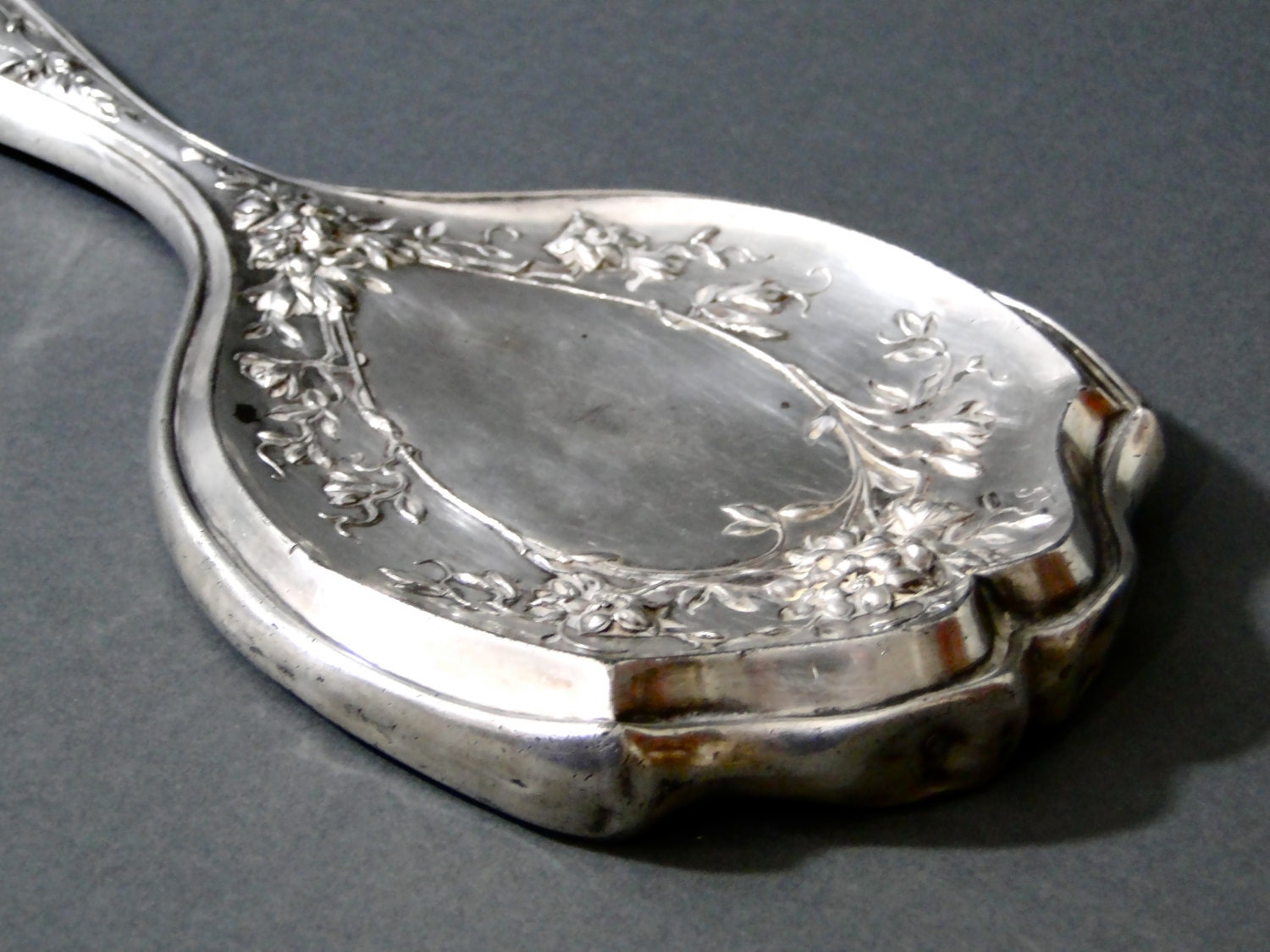
This was also seen in some antique chests of drawers. In the early 18th century many antique dressing tables were designed with collapsible mirrors fitted into the tops of the tables. During the later half of the 1600’s, Venetian and Parisian craftsmen supplied beautifully decorated toilet mirrors. To begin with they were made of silver or silver gilt with trestle.
#Antique silver hand mirror free
It was not until the late 17 th Century that dressing mirrors became free standing. Adam preferred gilt work usually on a soft wood and Hepplewhite usually used mahogany. Adam and Hepplewhite, designed more delicately proportioned mirrors, oval and rectangular in shape, with simpler scroll work, inlaid vase or similar classical motif. Sometimes they were inlaid with a shell pattern. This mirror is flanked by column sides topped with Corinthian style capitals and decorative features.ġ9th Century mirror frames were often in Mahogany, due to the beautiful finish and the durability of carvings produced. Earlier examples were made from pine with gilding finish and would often have pediments on the top with a prominent central motif in the form of an exotic bird or spread eagle. Large mirrors were still very expensive but the smaller wall mounted mirrors were cheap enough for people to buy. As the production of mirrors improved, more were made and larger, more grand versions came into existence. This Spectacular Eagle Convex Gilt Mirror features a carved eagle and raised balls on the carved frame with original convex mirror.Īntique mirrors were very rare up to the 1700’s. The convex mirror was produced for the dining room and its purpose was for the butler to keep an eye on the progress of a meal without having to move around the room disturbing people dining. This continued until the late 18th century when far bigger mirrors with much lighter frames were being produced.īy the beginning of the 19th century there was a rise in the popularity of small antique mirrors again, like the convex mirror. Larger mirrors were produced by creating frames which held several pieces of recycled glass, this gave the illusion of a single larger mirror. To avoid the tax and costly import of the larger mirrors from France, old mirrors were recycled. Because of the failure of English factories to make large mirror plates in that period, it dictated the form and development of the mirror being created in Britain at that time. There was a heavy tax on glass coming from abroad.



Recycling is a large part in today’s life and there was actually a form of recycling that started in the 18th century. These were free standing and fitted onto antique furniture.ĭuring the latter half of the 18th and 19th century, framing styles changed dramatically from elegantly carved gilt wood mirrors of the Chippendale period to beautiful polished frames like the antique cheval mirror of the Victorian period.ĭid you know antique mirrors were recycled as early as the 1700s.

By the late 18th century larger and better quality plates were being produced enabling more larger and decorative mirrors to come onto the market. The limitations of this process meant that only small plates could be made so several pieces of glass would be used to create a single mirror. They were not made in England until the 17th century, It was Sir Robert Mansell’s glass house in London in 1625 where they were first made by the cylinder process (where cylinders of glass were blown then split open and laid flat), and then by the Duke of Buckingham at his famous glass works at Vauxhall. Antique mirrors were first known by the name ‘looking glasses’ and they were first produced in Murano and silvered in Venice as early as the 16th Century.


 0 kommentar(er)
0 kommentar(er)
